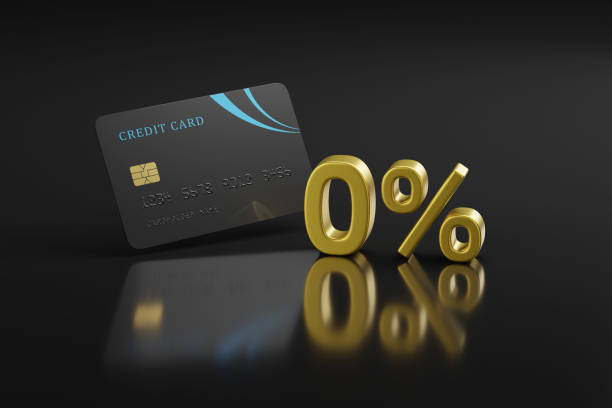Credit Tip Tuesday #133-How To Decode Fine Print On Your Credit Card Paperwork

Image Credits: iStock
Congratulations! You have got yourself a new credit card, and you are all set to embark on a journey of convenience and rewards. But wait, there is a catch—the dreaded fine print! There is no need to worry; we have your back.
It is also important to note that traditional credit card fine print is similar to secured credit card fine print, with only a few minor differences. In this blog, we are going to decode the mysterious world of credit card paperwork.
It can make all the difference in your financial journey if you understand the nuances of your credit card agreement. As you unlock these secrets, you will not only be able to avoid potential pitfalls but also make the best use of your credit card.
Let's go!
Why Does The Fine Print Matter?
The fine print on your credit card paperwork matters because it holds critical information that can impact your financial well-being. Understanding the fine print helps you grasp the interest rates, fees, and grace periods, enabling you to make informed decisions. It reveals the hidden terms and conditions associated with rewards and perks, preventing disappointment or missed opportunities.
Ignoring the fine print can lead to unexpected charges and debt traps. Decoding the fine print empowers you to manage your credit card responsibly and avoid costly surprises, ensuring a smooth and beneficial credit card experience.
Gather Your Credit Card Documents

Image Credits: Freepik
Before diving into the credit card fine print, gather all the paperwork that came with your credit card. This includes your
- Credit Card Agreement
- Monthly Statements
- The Schumer Box
Look for the welcome package, which usually includes the cardholder agreement, terms and conditions, and a disclosure statement. You do not have to read the entire document; just focus on the key sections that matter most. Having all the documents in hand will make spotting essential information about interest rates, fees, rewards, and payment terms easier.
Spotting Important Sections
When faced with a stack of credit card paperwork filled with fine print, knowing where to focus your attention is essential. By identifying the crucial sections, you can better understand your credit card's terms and conditions.
The following five sections deserve your undivided attention:
1. Interest Rates
Interest rates are the heart of credit card financing, so start by locating this vital piece of information. Look for the Annual Percentage Rate (APR), which indicates your card's borrowing cost. Be aware that credit cards often have different APRs for purchases, cash advances, and balance transfers. Understanding these rates will help you make informed choices about managing your credit card balance.
2. Fees
The fees associated with your credit card can significantly impact your finances. These may include an annual fee, late payment fee, over-limit fee, and foreign transaction fee. Finding and comprehending these fees will allow you to make decisions that can help you avoid unnecessary costs.

Image Credits: iStock
3. Grace Period
The grace period is a hidden gem in credit card paperwork. It is the window between your billing cycle's end and the payment due date when you can pay off your balance without incurring interest charges. Confirm if your card offers a grace period and, if so, make the most of it by paying your balance in full each month.
4. Rewards And Bonuses
If your credit card offers rewards, cashback, or bonuses, pay close attention to the conditions outlined in the fine print. Understand the eligibility requirements, redemption options, and any expiration dates to maximize the benefits of your rewards program.
5. Payment Terms
The fine print may specify the minimum payment required each month. Remember, paying only the minimum can lead to mounting debt due to interest charges. Take note of the payment terms to ensure you are managing your credit card balance responsibly.
Understanding The Terminology
Let's face it, credit card paperwork can feel like reading a foreign language. Deciphering the fine print on your credit card paperwork becomes much easier when you grasp essential credit card terminology.
Here are some key terms that frequently appear in credit card agreements:
1. Annual Percentage Rate (APR)

Image Credits: iStock
The Annual Percentage Rate is the annual interest rate you will be charged on any outstanding balances. It is crucial to know this rate, as it directly affects the cost of borrowing money using your credit card. Be aware that credit cards might have different APRs for purchases, cash advances, and balance transfers.
2. Minimum Payment
The minimum payment is the smallest amount you must pay monthly to keep your account in good standing. While paying the minimum helps you avoid late fees, it is essential to remember that carrying a balance will accrue interest, potentially leading to long-term debt.
3. Credit Limit
Your credit limit is the maximum amount you can spend on your credit card without penalties. It is like your spending cap. Keep an eye on your credit utilization ratio (the percentage of credit used), as high utilization can negatively impact your credit score.
4. Balance Transfer
A balance transfer involves moving an outstanding balance from one credit card to another, often to take advantage of lower interest rates or promotional offers. Understanding the terms of a balance transfer can help you save money on interest payments.
5. Cash Advance
A cash advance allows you to withdraw cash from your credit card, but be cautious—cash advances typically come with higher interest rates and may incur additional fees from the moment you withdraw the cash.

Image Credits: iStock
6. Foreign Transaction Fee
When you make purchases in a foreign currency or from a foreign merchant, some credit cards charge a foreign transaction fee, usually a percentage of the transaction amount. This fee can add up, so knowing if your card has this feature before traveling abroad is good.
Seeking Help When Needed
If you ever find yourself lost in the maze of credit card fine print, do not hesitate to seek help when needed. Credit card companies have dedicated customer service teams ready to assist you with any questions or concerns you may have. Contacting customer service can help you understand your rewards program better or clarify any fees you are unsure about, need clarification on, or want more information about.
They support you in navigating the complexities of your credit card agreement, ensuring you make informed decisions and have a smooth credit card experience.
Tips To Manage Your Credit Card Better

Image Credits: Freepik
Decoding the fine print is just the first step towards responsible credit card management. Here are five essential tips to help you make the most of your credit card while avoiding common pitfalls:
- Pay On Time, Every Time — Timely payments are the foundation of a healthy credit history. Set reminders or enroll in automatic payments to avoid late fees and maintain a positive credit score.
- Avoid the Minimum Trap — Paying just the minimum amount due might seem tempting, but it can lead to mounting interest charges. Pay more than the minimum whenever possible to chip away at your outstanding balance faster.
- Mind Your Credit Utilization — Keeping your credit card balance below 30% of your credit limit is a smart move. Low utilization shows lenders that you are a responsible borrower, positively impacting your credit score.
- Review Statements Regularly — Take a few minutes each month to review your credit card statements. This way, you can promptly spot any unauthorized charges or errors and address them with your issuer.
- Stay Informed — Credit card terms and conditions can change, so stay updated with any modifications. Awareness of updates helps you adapt to any alterations affecting your card's benefits or fees.
Conclusion
Decoding the fine print on your credit card paperwork is like unlocking the secret to more thoughtful financial choices. Understanding the jargon of interest rates, fees, rewards, and payment terms can save you from unexpected surprises and help you make the most of your credit card perks.
Do not toss that paperwork aside next time you receive a new credit card or an update. Take a moment to read and decode the fine print—it is worth the effort. And if you ever feel lost in the maze of credit card jargon, do not hesitate to contact customer service for guidance.
Stay informed, pay on time, and keep those credit card statements under your watchful eye. With these savvy skills, you will become a credit card ninja, slashing through the complexities and wielding your credit card like a pro.
Happy decoding and responsible credit card swiping!
Disclaimer: The information provided in this blog is for educational purposes only and does not constitute financial advice. Always consult with a qualified financial advisor before making any significant financial decisions.


